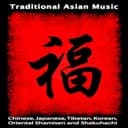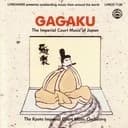Historical and Cultural Origins
The Hirajoshi scale emerged from Japan's rich musical heritage, with roots extending back over a millennium to the country's classical gagaku (elegant music) tradition. The name "Hirajoshi" roughly translates to "flat foundation" or "tranquil mood," reflecting the scale's characteristic calm and meditative quality. This pentatonic system developed alongside Japan's aesthetic principles of ma (negative space), wabi-sabi (beauty in imperfection), and yūgen (profound mystery), making it not merely a musical structure but an expression of Japanese philosophical thought. The scale was traditionally employed in koto music, shakuhachi flute compositions, and shamisen performances, serving as a foundational element in both sacred ceremonial music and secular entertainment. Understanding the Hirajoshi scale in F provides modern musicians access to centuries of Japanese musical wisdom while offering a tonal palette that transcends cultural boundaries.
Musical Character and Emotional Expression
The F Hirajoshi scale evokes a distinctly contemplative and introspective emotional landscape, characterized by its unusual interval structure that includes a minor second between the first and second scale degrees (F to G), and another between the fourth and fifth degrees (C to Db). This creates moments of harmonic tension that resolve in unexpected ways, producing an aesthetic that Western ears often perceive as both ancient and otherworldly. The scale's pentatonic nature—having only five notes within the octave—provides ample space for melodic breathing and emphasizes each note's individual character. When played over an F root, the scale suggests neither major nor minor tonality in the traditional Western sense, instead occupying a tonal ambiguity that can express melancholy, serenity, mystery, or spiritual transcendence depending on rhythmic context and phrasing. The absence of a traditional leading tone (E natural) prevents conventional Western resolution patterns, encouraging composers to explore alternative melodic gestures and harmonic progressions that emphasize circular rather than linear musical development.
Practical Applications and Performance Techniques
Musicians approaching the F Hirajoshi scale should focus on exploiting its characteristic minor second intervals (F-G and C-Db) as expressive devices rather than avoiding them as dissonances. In improvisational contexts, these semitone movements create dramatic tension when played slowly or add exotic color when executed rapidly. The scale works particularly well over sustained F pedal tones, F power chords (F-C), or more complex voicings that avoid the major or minor third, allowing the scale's inherent ambiguity to shine. Pianists and guitarists can emphasize the scale's Japanese character by incorporating techniques from traditional instruments: consider using sparse, deliberate note placement reminiscent of koto plucking, or explore microtonal bends between G and Ab to emulate shakuhachi inflections. The scale pairs effectively with modal accompaniment patterns, minimalist harmonic structures, and ambient soundscapes. Composers can create authentic-sounding Japanese-influenced music by combining the F Hirajoshi scale with pentatonic rhythmic patterns, asymmetrical phrase lengths (5, 7, or 9-beat patterns), and dynamics that emphasize gradual crescendos and diminuendos rather than sharp accents.
Relationship to Other Scale Systems
While the F Hirajoshi scale shares the pentatonic structure of the F minor pentatonic, it substitutes the minor seventh (Eb) with a major second (G), fundamentally altering its harmonic character. Compared to the F major scale, Hirajoshi omits the major third (A), perfect fourth (Bb), and major seventh (E) while incorporating the flattened second (Ab) and flattened fifth (Db), creating a sound world entirely removed from Western major-minor tonality. The scale diverges even further from F natural minor, sharing only the root (F) and perfect fifth (C) while replacing minor's characteristic intervals with the Hirajoshi's distinctive semitone relationships. Within the Japanese scale family, F Hirajoshi can be understood as a mode or rotation of other traditional scales: it shares pitch content with certain configurations of Iwato (starting from different scale degrees) and contrasts with the brighter Yo scale which avoids semitone intervals entirely. This interconnectedness among Japanese pentatonic systems allows musicians who master F Hirajoshi to quickly access related tonal palettes by simply emphasizing different tonic centers within the same note collection.





